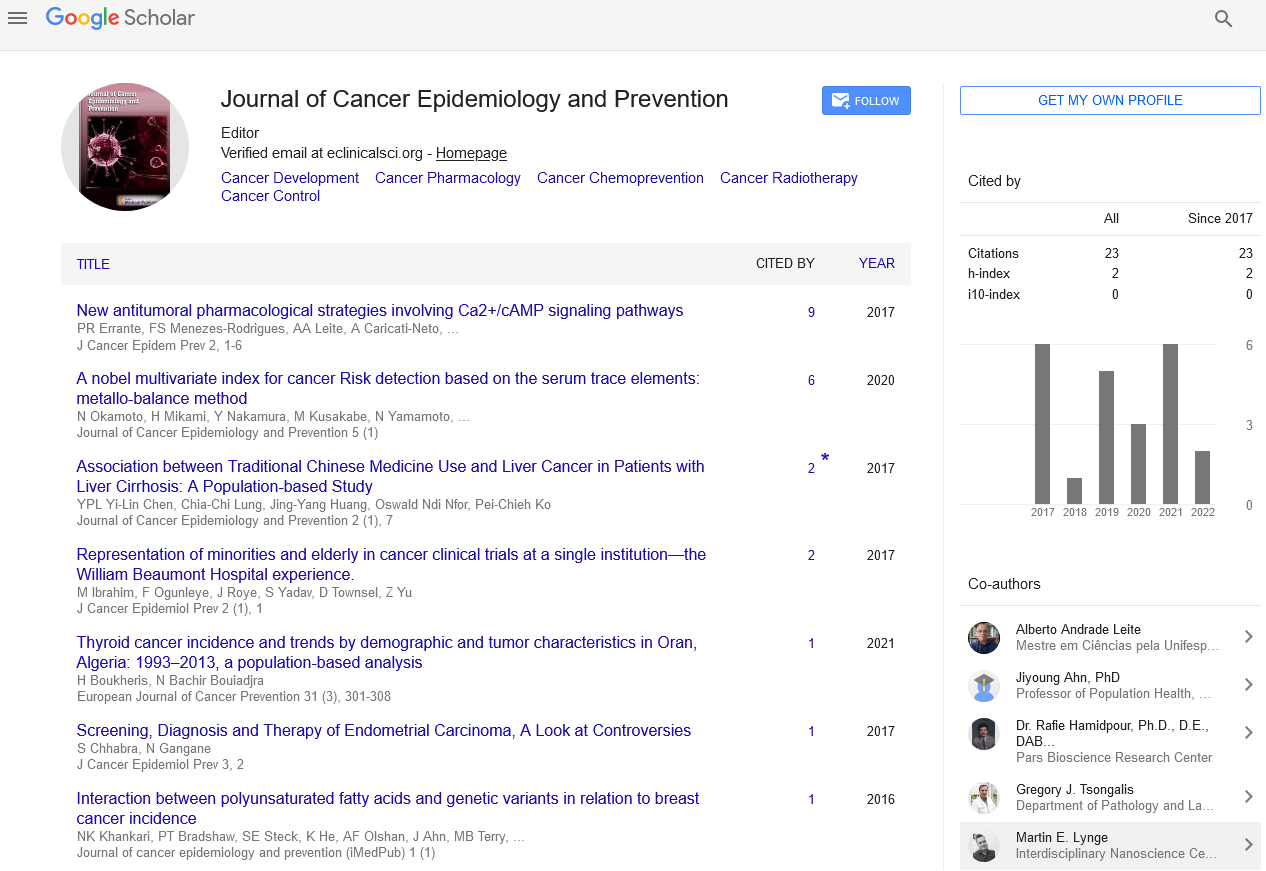Commentary - (2024) Volume 9, Issue 2
Immune Prevention: Harnessing the Body’s Defence Mechanisms
Maurice Compte*
Department of Ecosystem Science, Lund University, Sweden
*Correspondence:
Maurice Compte,
Department of Ecosystem Science, Lund University,
Sweden,
Email:
Received: 29-May-2024, Manuscript No. IPJCEP-24-20851;
Editor assigned: 31-May-2024, Pre QC No. IPJCEP-24-20851 (PQ);
Reviewed: 14-Jun-2024, QC No. IPJCEP-24-20851;
Revised: 19-Jun-2024, Manuscript No. IPJCEP-24-20851 (R);
Published:
26-Jun-2024, DOI: 10.36648/IPJCEP.9.2.19
Introduction
The human immune system is a marvel of biological engineering,
equipped to protect the body from a multitude of pathogens,
including viruses, bacteria, fungi, and parasites. Immune
prevention refers to strategies and interventions designed to
enhance or support the immune system’s natural defences to
prevent infections and diseases. This comprehensive article
explores the mechanisms of immune prevention, the role of
vaccines, lifestyle factors, advancements in immunotherapy,
and future directions in this critical field. The immune system is
composed of two main branches: innate and adaptive immunity.
This is the body’s first line of defence, providing immediate
but non-specific protection. Components of innate immunity
include physical barriers (like skin and mucous membranes),
phagocytic cells (such as macrophages and neutrophils),
natural killer cells, and various proteins (such as cytokines and
complement proteins). This branch is more specialized and
involves the activation of lymphocytes (B cells and T cells) that
recognize specific antigens. Adaptive immunity is characterized
by its ability to remember previous encounters with pathogens,
providing long-lasting protection. B cells produce antibodies
that bind to antigens, neutralizing pathogens or marking them
for destruction. These cells come in different types, including
helper T cells that assist other immune cells and cytotoxic T cells
that destroy infected cells.
Description
These signalling molecules mediate and regulate immunity,
inflammation, and haematopoiesis. Cells that engulf and digest
pathogens and debris. Vaccines are a cornerstone of immune
prevention, working by stimulating the immune system to
develop immunity to specific pathogens without causing the
disease. They contain antigens derived from the pathogen,
which can be inactivated, attenuated, or in the form of subunits
or mRNA. Vaccines have had a profound impact on public
health, leading to the eradication or significant reduction of
diseases like smallpox, polio, measles, and hepatitis B. They
not only protect vaccinated individuals but also contribute
to herd immunity, reducing the spread of infectious diseases
within communities. A balanced diet rich in vitamins and
minerals supports immune function. Key nutrients include.
Found in citrus fruits, it enhances the production and function
of white blood cells. Obtained from sunlight and certain foods,
it modulates the immune response. Present in meat, shellfish,
and legumes, zinc is crucial for the normal development and
function of immune cells. Regular physical activity improves
cardiovascular health, reduces inflammation, and enhances
immune surveillance. Moderate exercise is beneficial, while
excessive training without adequate recovery can impair
immune function. Adequate sleep is essential for maintaining
immune health.
Conclusion
Sleep deprivation can reduce the production of cytokines and
antibodies, making the body more susceptible to infections.
Chronic stress can suppress the immune response by
increasing the production of cortisol, a hormone that inhibits
inflammation. Techniques such as mindfulness, meditation,
and yoga can help manage stress levels and support immune
function. Monoclonal antibodies are lab-produced molecules
that can mimic the immune system’s ability to fight off harmful
pathogens. They are used in treating various diseases, including
certain cancers, autoimmune disorders, and infectious diseases
like COVID-19. Cancer immunotherapy, including checkpoint
inhibitors and CAR T-cell therapy, leverages the immune
system to target and destroy cancer cells. These therapies have
revolutionized cancer treatment, offering new hope for patients
with previously untreatable cancers.
Acknowledgement
None.
Conflict Of Interest
The author’s declared that they have no conflict of interest.
Citation: Compte M (2024) Immune Prevention: Harnessing the Body Defence Mechanisms. J Cancer Epidemiol Prev. 9:19.
Copyright: © 2024 Compte M. This is an open-access article distributed under the terms of the Creative Commons Attribution License, which permits unrestricted use, distribution, and reproduction in any medium, provided the original author and source are credited.

